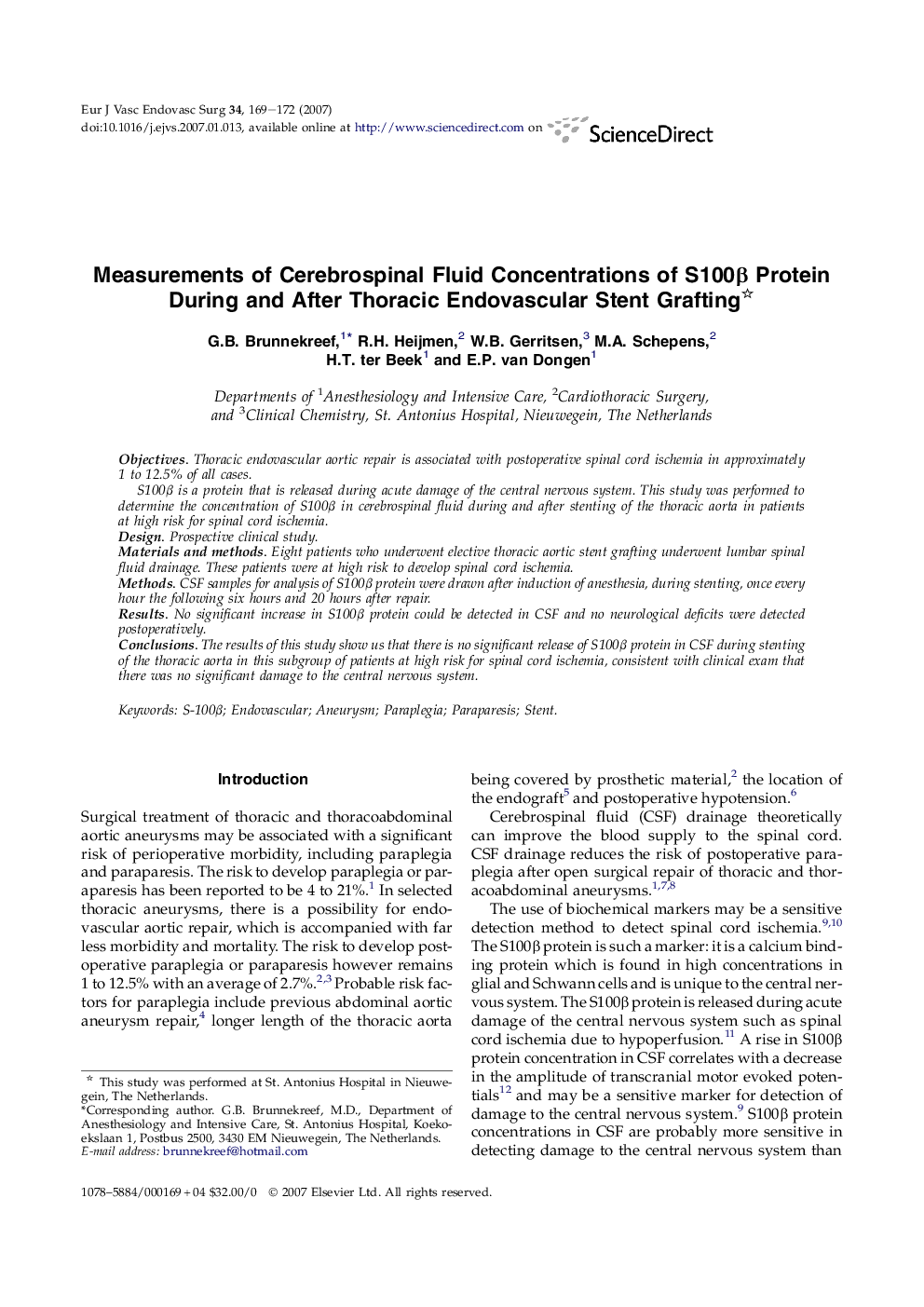| Article ID | Journal | Published Year | Pages | File Type |
|---|---|---|---|---|
| 2914145 | European Journal of Vascular and Endovascular Surgery | 2007 | 4 Pages |
ObjectivesThoracic endovascular aortic repair is associated with postoperative spinal cord ischemia in approximately 1 to 12.5% of all cases.S100β is a protein that is released during acute damage of the central nervous system. This study was performed to determine the concentration of S100β in cerebrospinal fluid during and after stenting of the thoracic aorta in patients at high risk for spinal cord ischemia.DesignProspective clinical study.Materials and methodsEight patients who underwent elective thoracic aortic stent grafting underwent lumbar spinal fluid drainage. These patients were at high risk to develop spinal cord ischemia.MethodsCSF samples for analysis of S100β protein were drawn after induction of anesthesia, during stenting, once every hour the following six hours and 20 hours after repair.ResultsNo significant increase in S100β protein could be detected in CSF and no neurological deficits were detected postoperatively.ConclusionsThe results of this study show us that there is no significant release of S100β protein in CSF during stenting of the thoracic aorta in this subgroup of patients at high risk for spinal cord ischemia, consistent with clinical exam that there was no significant damage to the central nervous system.
